International Conference 11-12 May 2017 Aix-en-Provence, France: Art et Jardins (Art and Gardens)
(Organised by Mediterranean Gardening France)

| At the Bibémus quarries, inspirational haunt of Cézanne |
Over two days, fifty participants from eight countries and three continents explored the theoretical and practical relationships between art and gardens.
Set in the vibrant city of Aix-en-Provence, home town of Paul Cézanne, lectures from renowned speakers complemented visits to gardens in the surrounding area.
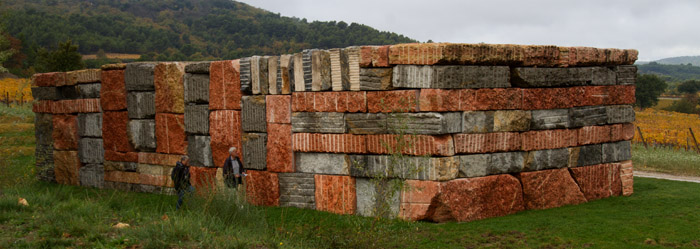
| Château La Coste: Sean Scully – Wall of Light Cubed (2007) |
11 May
Lecture
Laura De Beden
12 May
Lecture
Louisa Jones
Lecture Louisa Jones
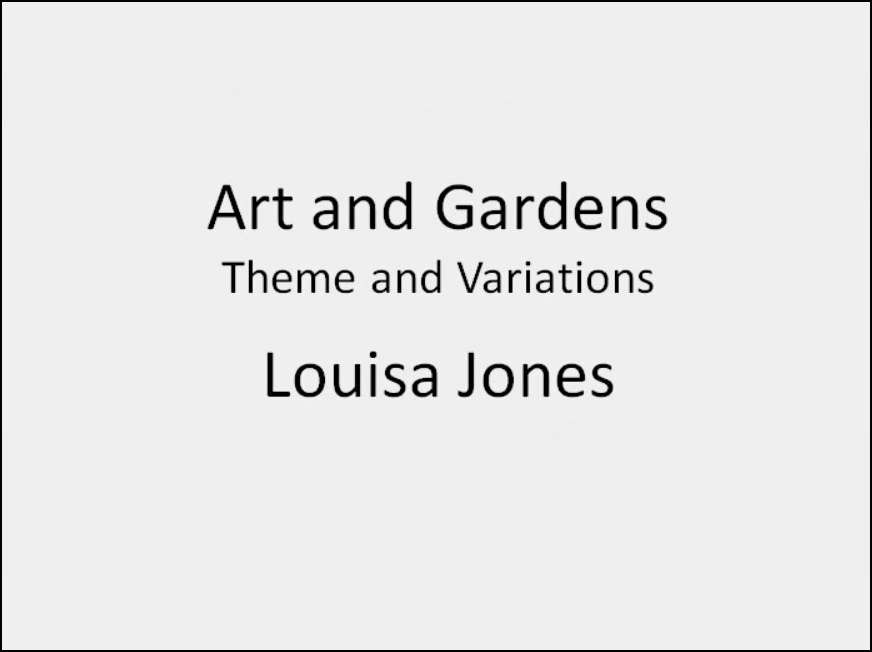
Theme:
How are the terms “art” and “gardens” generally connected? Are gardens “art”?
This question is asked throughout the lecture.
Variations:
Artists’ Gardens
Garden-making inspired by other arts through the centuries: architecture, painting, sculpture
Art IN gardens: sculpture placed, site-generated, the site itself as sculpture
Land and landscape art from then to now: garden art as self-expression, discovery, sharing
Domestic versions, recycling for new vision
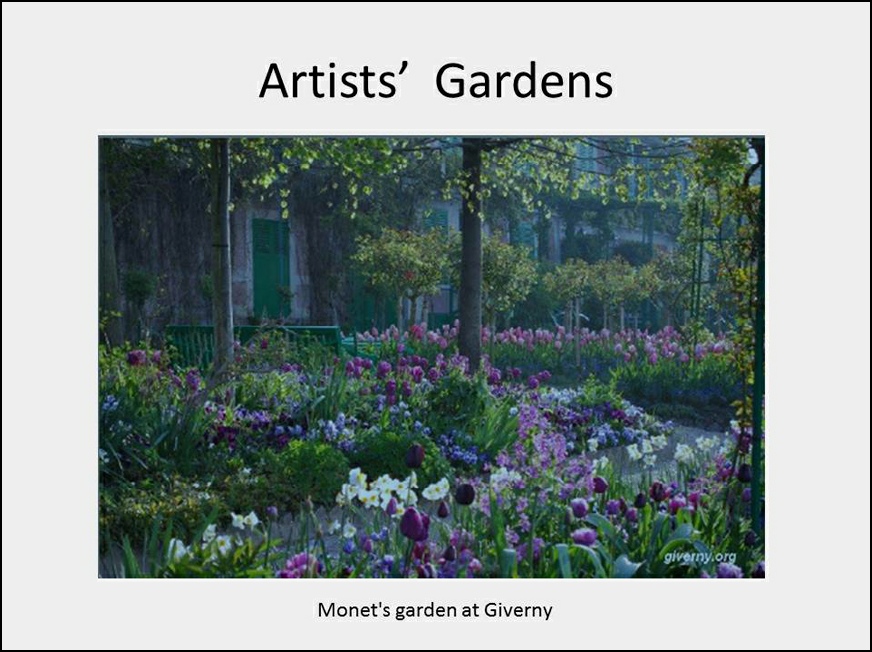
Artists’ Gardens — so different, so personal in how and why they relate to their creator’s work.
Too complex a subject for this lecture.
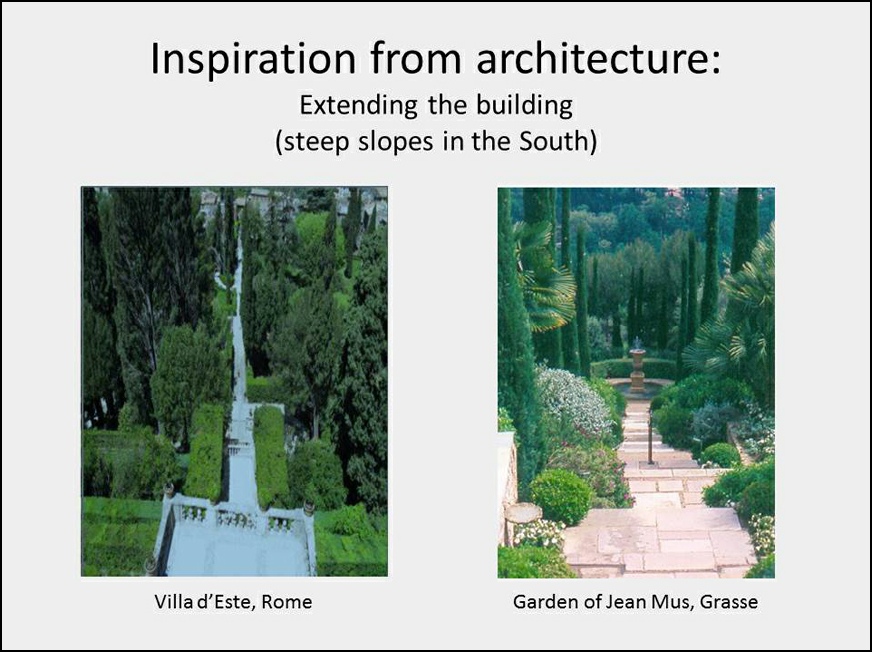
Gardens inspired by other arts.
Architecture:
Gardens, in earlier centuries, often considered an extension of the façade of a building, repeating lines and volumes. This is easier to do in northern Europe where houses often surrounded by flat or rolling ground. In Mediterranean landscapes, steep slopes mean that long straight axes go downhill. At the bottom you turn look back up at the building.

Another problem in the south: the need for shade in front of the building, even on flat land. Shade trees make it virtually impossible to view the main façade and a parterre in front of it as part of the same architecture.
One successful experiment however, on unusually flat land: Dominique Lafourcade’s Les Confines, where she has both the big shade trees and the parterre.
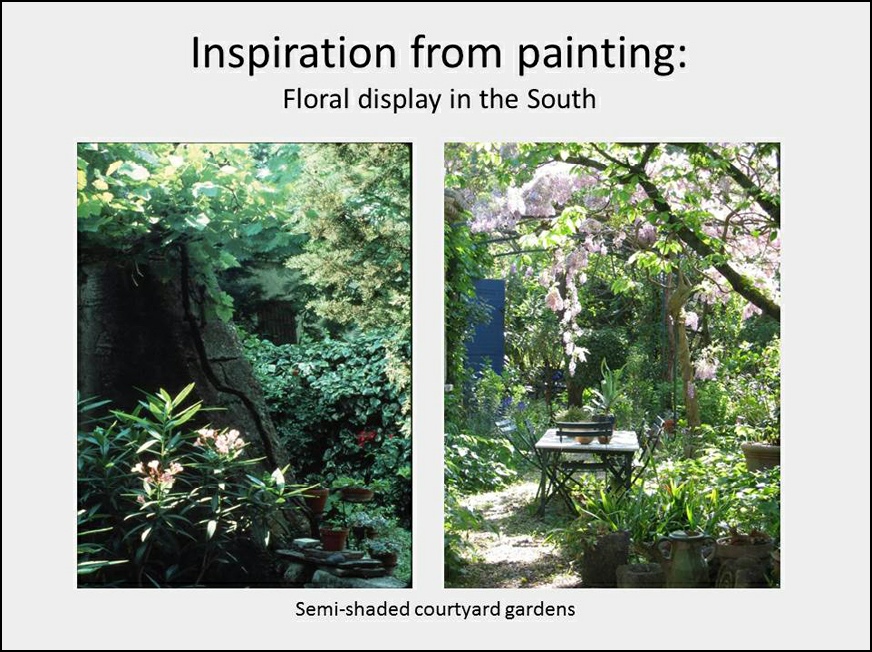
Painting: since the late 19th century, floral and mixed borders have been seen as a series of pictures, viewed from open lawns under open skies. You stand back, take distance from the display the better to appreciate it. In the south, gardens need shade in summer, water is limited. Floral display often densest in small courtyards, plantings in pots.
Pictures: semi-shaded courtyard gardens. Right one is the garden of Doudou Bayol in Saint Rémy.
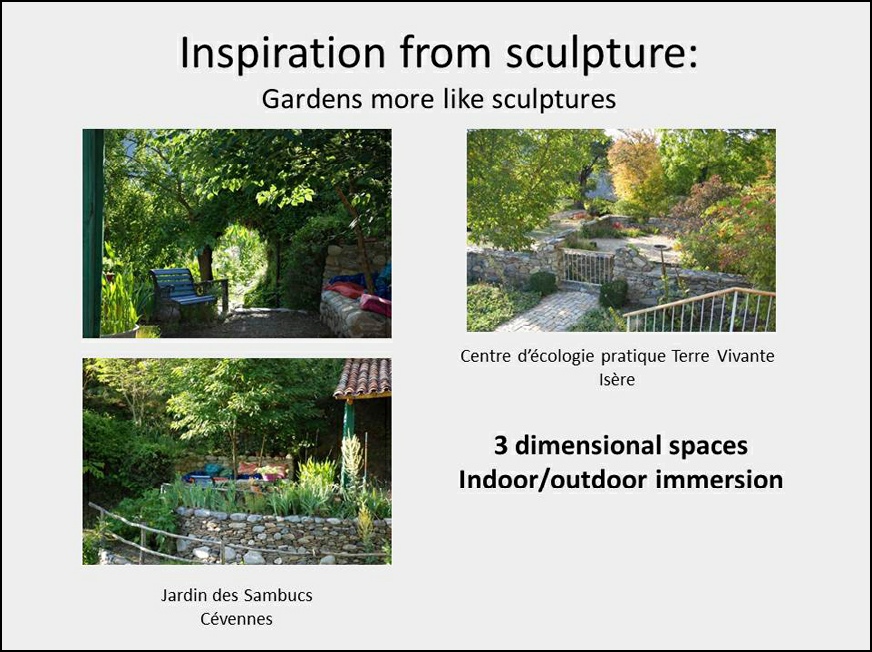
Sculpture.
It is common today for gardens to be experienced as three dimensional: you are IN them, they are around you; gardens for living, not just looking. For example, The Jardin des Sambucs near Le Vigan in the Cévennes. Part built from the ruins of a room. Other garden rooms for siestas, reading, talking…
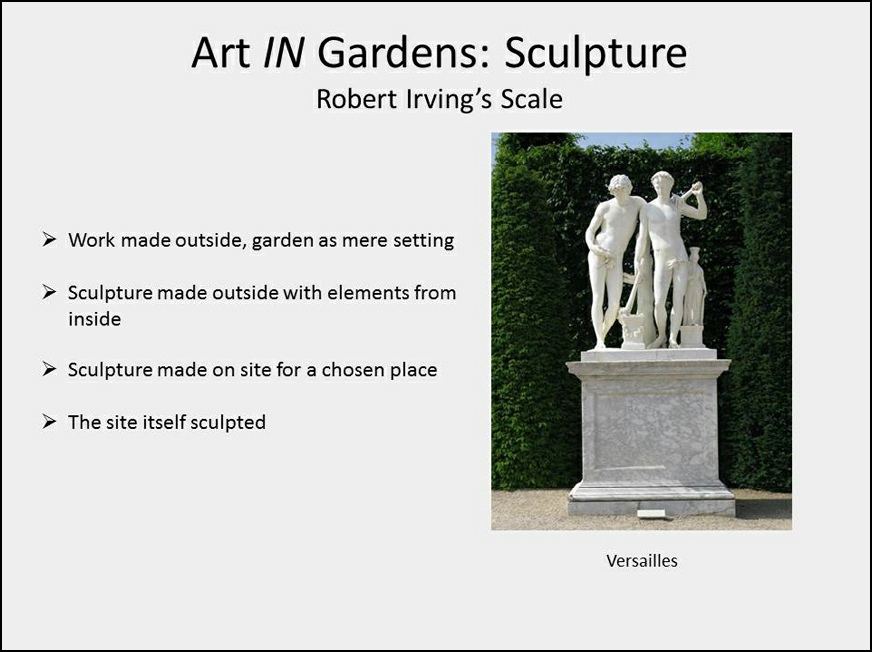
Art IN gardens Robert Irving’s scale of sculpture for gardens:
- Work made outside, garden as mere setting
- Sculpture made outside with elements from inside, with a particular place in mind—more dialogue with a more interesting setting
- Sculpture made on site for a chosen place, object and setting both part of the artwork
- The site itself sculpted
The picture is of Versailles: the sculptures look down on you, set against a green curtain.
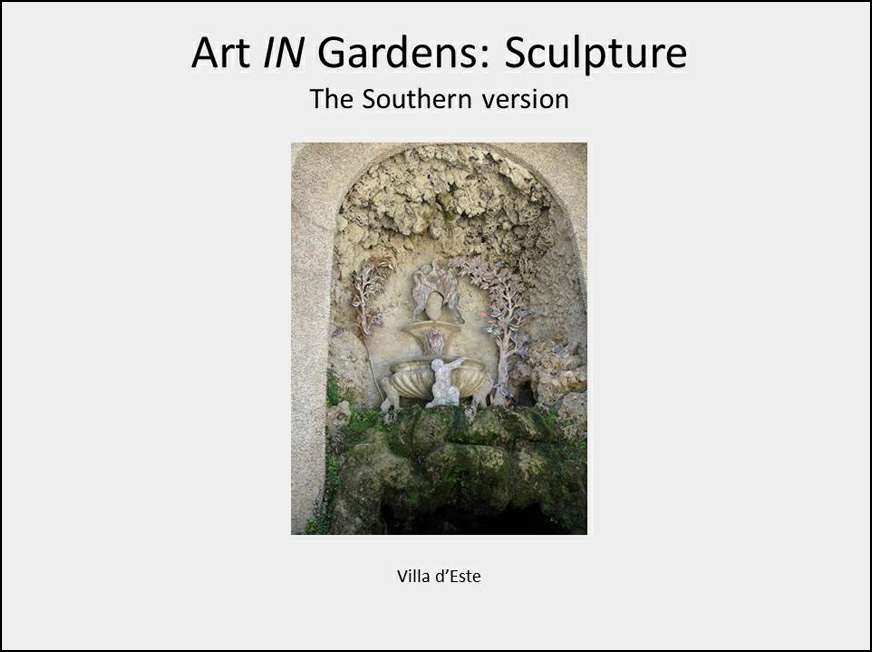
Compare the previous slide with the southern version (a century earlier): Villa d’Este, the sculptures emerge from the energies of the earth. Not authority from above. More dialogue with the green setting.

A query about objects in a garden brought from outside: To be art, must an object be useless?
Pictures: two ladders, one for picking fruit in the Bayol garden, the other a sculpture in famous collector Pierre Bergé’s garden.
The art consists not only of the object but its placing, the rapport with what is around it.
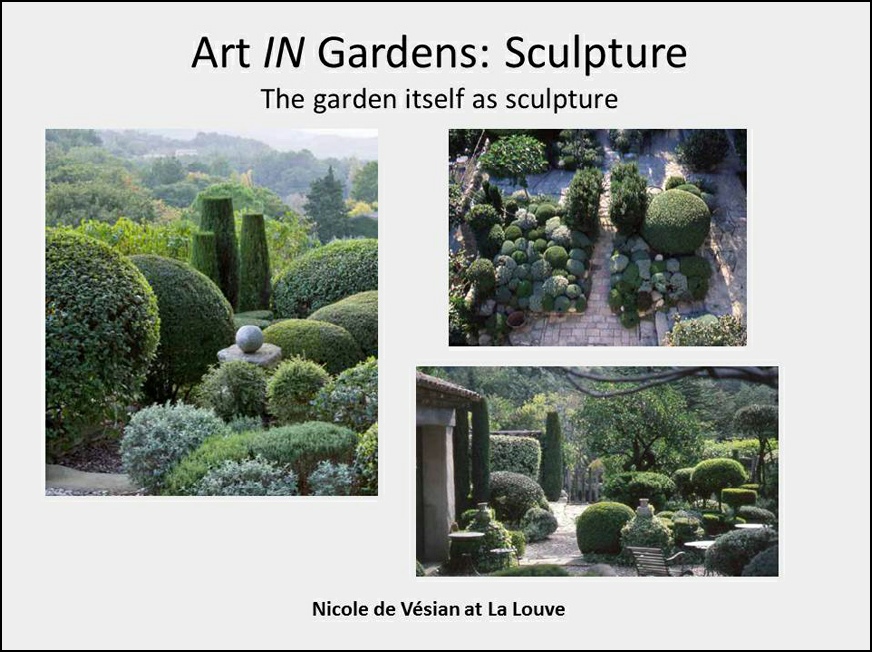
The garden itself as sculpture: La Louve, Nicole de Vésian’s garden. Each plant keeps its character but blends in harmony; all groupings are assymetrical; a series of planes from near to far; hard clipping of some (natural mounding in others) but there is a dialogue with the wild landscape beyond, often the same species. Stone and plants given equal importance, all weathered, worked on.
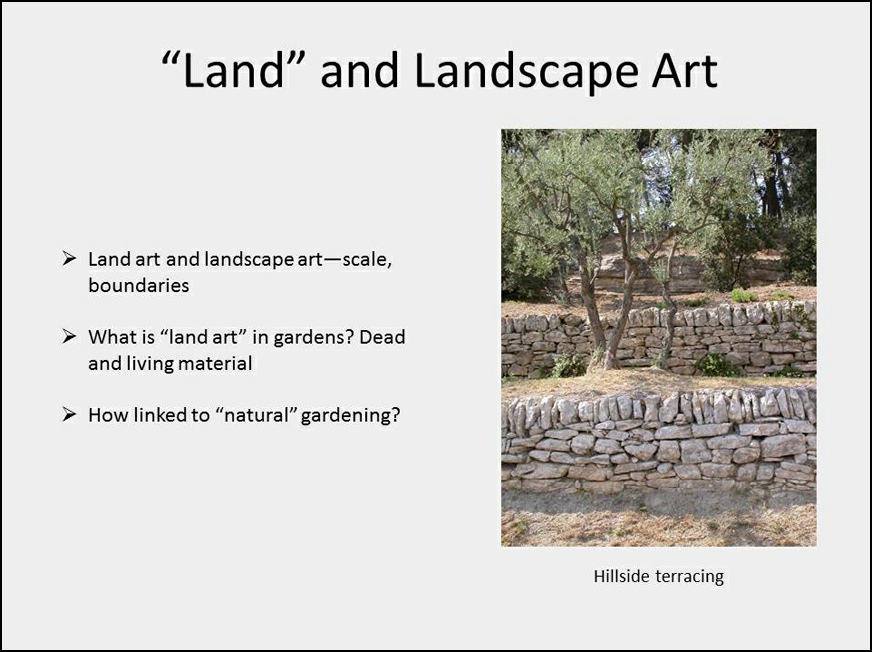
Land and landscape Art
A) Land art: The original “Land Art”, American 1970s, involved huge scale, sterile landscapes (salt sea, deserts) and themes of entropy, dispersal of energy, destruction.
In the 80s and 90s, even artists who wanted to celebrate the earth had and still have problems dealing with living materials, cf the work of Andy Goldsworthy.
Geological time and weather, but not living time, flux, movement, change, growth…cf Gilles Clément and natural gardening.
B) “Landscape Art “ today: we recognize vernacular precedents practiced by humans especially in the Mediterranean for millennia: hillside terracing example (useful, but also beautiful? Like carpets? Pottery? Old farmhouses? Art or crafts?).
Picture of hillside terracing, anonymous

Today, landscape artists often celebrate natural process, hence now a convergence with garden making. Insistence on the specifics of particular sites, site memory (history) recycling.
Agricultural inspiration for landscape art: field art
The lavender field at La Louve, where every second plant is clipped.
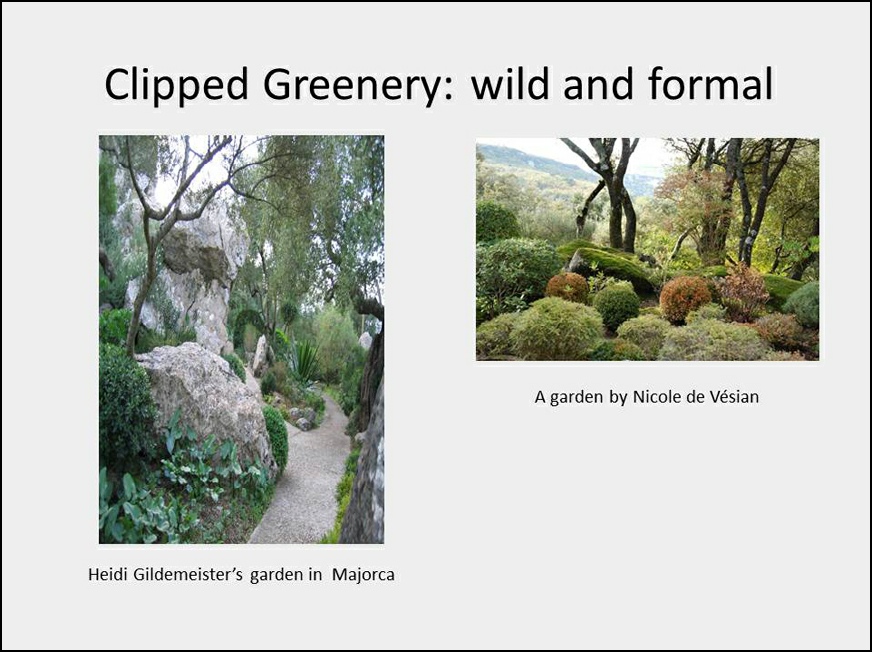
Mediterranean broadleaf evergreens (many different families) lend themselves to shaping and definition of space because they quickly grow again from the base (evolutionary adaptation to fires and grazing). Some landscape artists/gardeners use only plants already there, thin and shape them. Often hard to tell where spontaneous nature stops and human intervention begins.
Picture: Heidi Gildemeister’s garden in Majorca, species added but the basic structures uses what is already there. Formal gardening and wild gardening are not opposite poles here but complementary, slide into each other
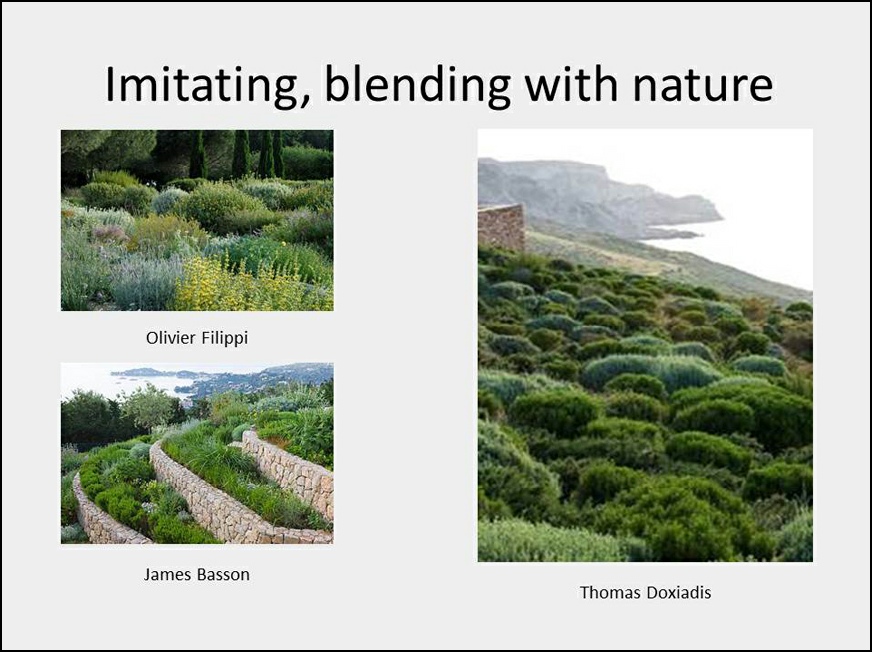
Garrigue landscapes: again, blending with and inspired by what is already on the site. Dry climate gardening.
Pictures from Thomas Doxiadis, Olivier Filippi and James Basson
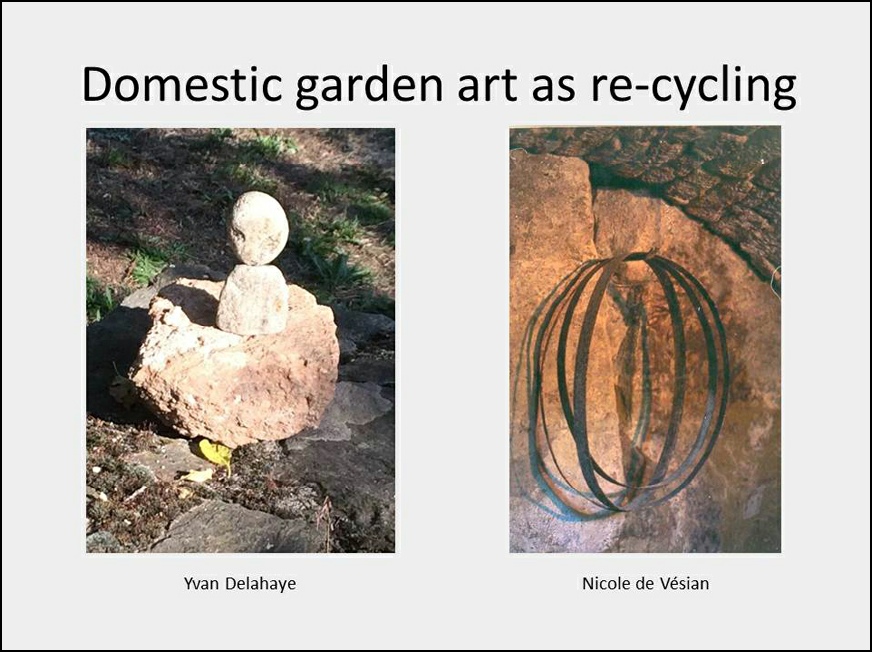
Landscape art at home: recycling commonplace objects. The point is not the object but where it is, its relationship to setting: variations on colours, textures, lighting effects, and as always, pleasure given through creative imagination, sharing, seeing afresh.
Pictures:
A simple pile of stone made by Yvan Delahaye, master stonemason, during a coffee break. He simply couldn’t stop creating.
Nicole de Vésian’s barrel hoops artfully arranged for catching light, casting shadows, bringing together two types, colours, textures of stone. Again, the spontaneous and the built in dialogue.
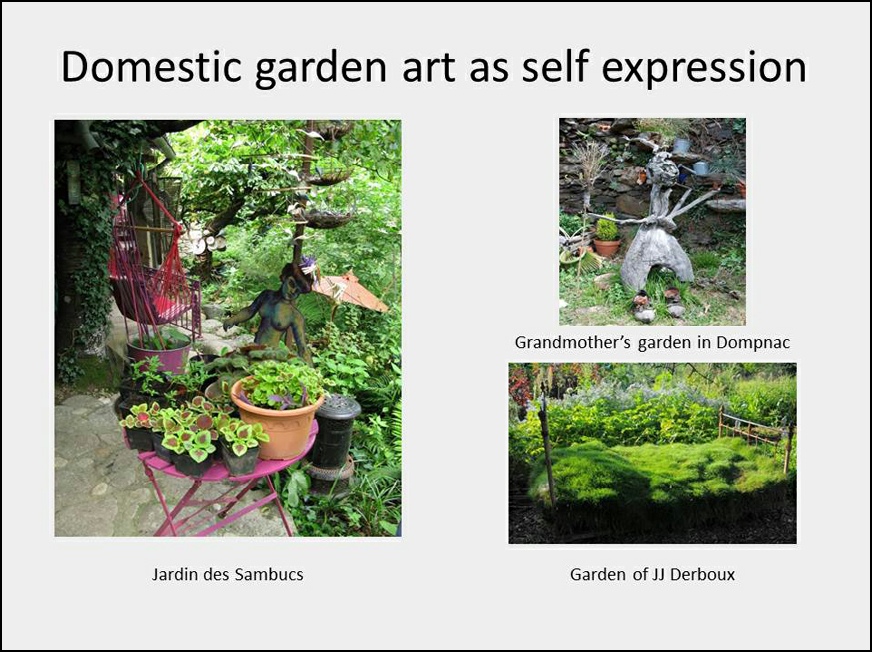
Domestic garden art as play, self expression, enjoyment, sharing...
Jardin des Sambucs; a grandmother’s garden in Dompnac; JJ Derboux’s garden, the zoysia bed in his potager

Conclusion: Mediterranean landscape art today:
The art of gardening for self-expression , exploration, sharing
Reconciling crafts and art, use and beauty
Human intervention (art) as dialogue with nature, not domination, appreciating what is there, what has gone before, recycling and renewing, sharing...
